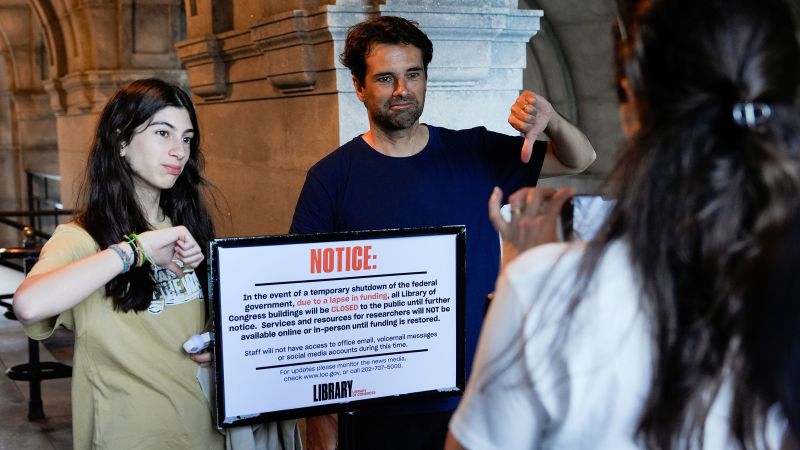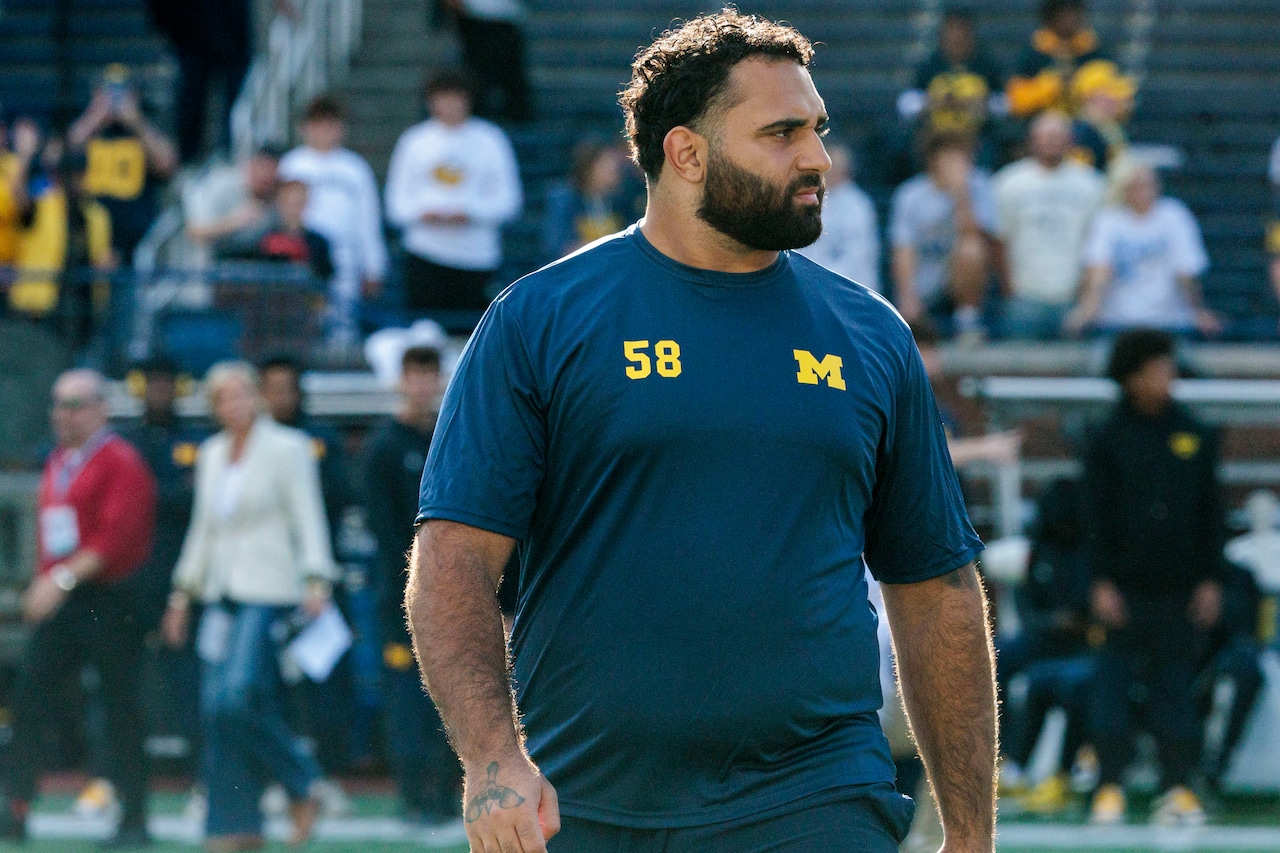
A version of this story appeared in CNN’s What Matters newsletter. To get it in your inbox, sign up for free here.
Aside from the routinely expiring debt ceiling, the practice of government shutdowns may be the most dramatic, unique and objectively silly quirks of how Washington, DC, works.
Shutdowns cost the government billions of dollars, they interrupt the productivity of federal workers, and it’s just plain a bad look for the most powerful democracy on earth to see its government literally sputter.
The concept of a shutdown is essentially unheard-of in much of the rest of the world. In most forms of democratic government, a failure to keep the government functioning would lead to the establishment of a new government.
But in the US, the threat of shutdown seems to come every year, and sometimes more often than that.
Separation of powers is supposed to be a feature of the US system, but recent years have seen a rise in dysfunction rather than the debate and consensus required to keep things going. Shutdowns did not exist until Jimmy Carter’s Attorney General wrote a memo in 1980 reinterpreting a law from the 1880s.
It doesn’t have to be this way. There have been multiple proposals to simply do away with the concept of shutdowns.
Sen. Ron Johnson, the Wisconsin Republican, proposed a bill this year, the Eliminate Shutdowns Act, that would keep the government going at existing funding levels in two-week increments in the absence of an actual funding bill.
“Aren’t you getting sick and tired of these government shutdowns? The drama, the turmoil, the partisan bickering, and holding the American people hostage for demands of billions and billions of dollars?” Johnson said on the Senate floor ahead of an unsuccessful vote to debate his bill.
It’s easy to poke holes in Johnson’s idea. A limited government supporter like him might prefer a rolling funding mechanism as a backdoor way to control spending by preventing future increases. All Democrats opposed it. But there have also been bipartisan proposals, such as the one first put forward in 2019 by Democratic Sen. Maggie Hassan of New Hampshire and GOP Sen. James Lankford of Oklahoma.
It too would fund the government in two-week increments in the event of a lapse in funding bills, but it would also put a hold on all taxpayer funded travel for lawmakers and put other measures in place to keep them in Washington and at work until a funding bill was passed. That more restrictive proposal has never gotten a vote.
Party leaders would never admit this. The fact is that while they like to complain about the effects of shutdowns, leaders of both parties also see their utility. Particularly for a party in the minority, in this case Democrats, it’s one of the few consequential pieces of leverage they have.
In recent years, the president’s party — whichever is in power — has passed what is known as a reconciliation bill without any input from the other side. Democrats did it under Joe Biden. Republicans did it this year with Trump’s “One Big Beautiful Bill,” which sought to undo many of Biden’s accomplishments.
Those bills exploit budget rules to get things done with a bare majority. Spending bills, on the other hand, require 60 votes, so the minority party nearly always has to be involved.
A role reversal for everyone involved. Republicans, who earlier this year cheered massive cuts to the federal government, are talking about the harms of a government shutdown, the welfare of federal workers and the services everyday Americans will miss. Those are usually Democrats’ talking points.
It’s always Obamacare. The conventional wisdom is that the party causing the shutdown takes the blame. That may be true in the short-term, but it rarely matters politically over time. After Sen. Ted Cruz helped engineer a shutdown to try to chip away at Obamacare in 2013, his Republicans gained seats in the House and Senate in the 2014 election.
In this instance, Democrats are withholding votes to reopen the government over their insistence on keeping more generous subsidies for people who get their health insurance from Obamacare.
What’s the math? Republicans in the Senate need help from Democrats to get 60 votes and break a filibuster. In other recent shutdowns, Republicans in the House needed help from Democrats because of defections in the own party.
Two Democrats and an independent senator who caucuses with them — Sens. Angus King of Maine, John Fetterman of Pennsylvania and Catherine Cortez Masto of Nevada — voted to keep the government open. That means Republicans would need to pick up four more Senate Democrats in order to break the Democratic blockade, and potentially more if any Republicans decide to vote against it.
Both sides have refined their talking points and now the shutdown drama is unfolding.
What are Republicans saying? Republicans have distilled their complicated argument into something very simple. They accuse Democrats of shutting down the government in order to give health benefits to undocumented immigrants, who they call illegals.
Democrats say that’s untrue. But in an indication for how far the immigration debate has shifted, most Democrats are on defense about the accusation instead of arguing that sick people should get medical care.
Read CNN’s Fact Check of this complicated argument.
What are Democrats saying? They want to force Republicans to guarantee enhanced subsidies for Obamacare enrollees will be protected. It’s an issue Democrats are choosing to push right now since the subsidies don’t actually expire until the end of the year. Democrats argue they need to use every opportunity to protect the subsidies since Republicans, when they passed their tax cut and spending cuts bill earlier this year, already acted to cut spending on health care.
There are other pressure points. Republicans are also using the shutdown as an opportunity to hit close to home for Senate Minority Leader Chuck Schumer and House Minority Leader Hakeem Jeffries, both New Yorkers.
The Department of Transportation cited the shutdown as a reason to further delay $18 billion in federal funding for large New York transportation projects to upgrade rail tunnels under the Hudson River and expand the Second Avenue Subway. Funding had already been delayed as the Department of Transportation investigated diversity initiatives tied to the contracts under the Biden Administration.
Local officials said the holdup amounted to political retribution.
Republicans have also threatened to fire federal workers rather than furlough them during the shutdown, although Democrats have argued this is just a ploy to blame Democrats for reductions in the federal workforce Republicans were already planning on carrying out.
Vice President JD Vance defended holding the transportation funds and potentially firing workers.
“We’re going to have to triage some certain things,” he said during a press briefing at the White House. “That means certain people are going to have to get laid off, and we’re going to try to make sure that the American people suffer as little as possible from this shutdown.”



